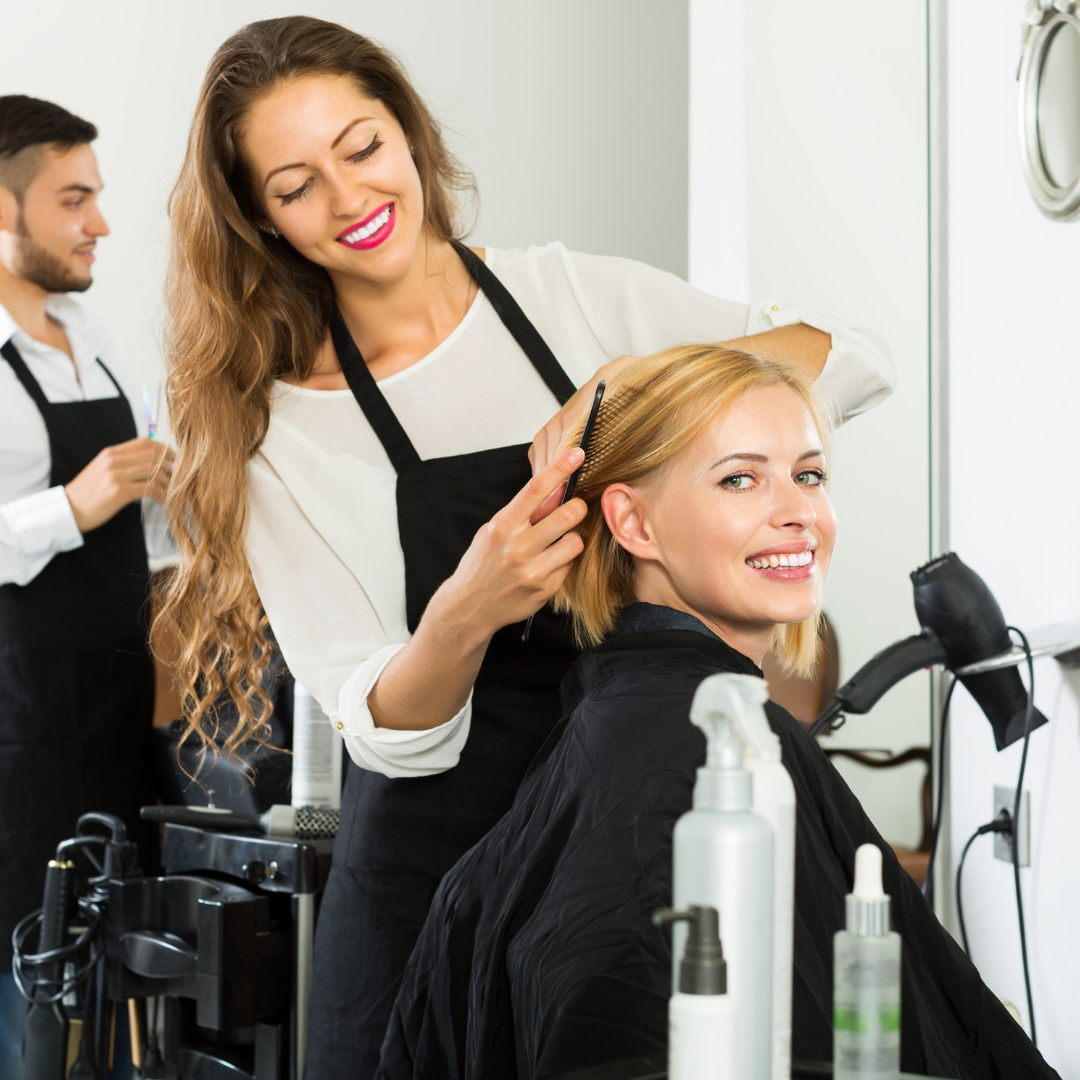Why Beauty Therapists Experience Back and Neck Pain
Back and neck pain are among the most common complaints among beauty professionals, including hairdressers, estheticians, and massage therapists. The nature of their work—prolonged standing, repetitive movements, and awkward postures—puts excessive strain on the spine, shoulders, and wrists.
Common Causes of Pain in Beauty Professionals
Here are some common work habits that contribute to chronic pain:
Leaning forward for long periods – Whether you're cutting hair, applying makeup, or massaging a client, bending over strains the neck and upper back.
Repetitive arm and wrist movements – Constant use of styling tools or massage techniques can lead to shoulder stiffness and carpal tunnel syndrome.
Standing for long hours – This contributes to lower back pain, hip discomfort, and leg fatigue, especially if the floor surface is hard.
Improper workstation setup – Non-adjustable chairs and treatment tables force therapists into awkward positions, increasing the risk of muscle strain.

Beauty Therapist Posture Tips: How to Reduce Pain
Using the right posture techniques can prevent long-term damage. Here are some easy-to-follow tips:
-
Keep your back straight and shoulders relaxed – Avoid hunching over clients or leaning too far forward. Use your core muscles for support.
-
Adjust your treatment chair and table – A height-adjustable workstation allows you to maintain a neutral spine position, reducing the strain on your neck and shoulders.
-
Take short breaks every 30 minutes – Stretching in between appointments relieves muscle tightness and improves circulation.
-
Use ergonomic stools – If sitting, choose a chair with lumbar support or saddle stool to keep your posture in check.
-
Avoid excessive wrist bending – Keep your wrists in a neutral position whenever possible while using styling tools, tweezers, or massage techniques.
Ergonomic Tools for Beauty Professionals
Investing in ergonomic equipment can significantly improve comfort and reduce pain. Consider these items:
-
Adjustable chairs and tables – Ensure clients are positioned at a comfortable height to minimize bending.
-
Arm supports – Helpful for estheticians and nail technicians who perform precise, repetitive tasks.
-
Compression gloves – Can help reduce hand fatigue and wrist pain for those performing massages or hairstyling.
Preventing Neck and Shoulder Pain in Beauty Therapists
Simple Exercises to Prevent Pain
Performing a few quick exercises daily can relieve tension and improve posture:
-
Neck Stretch: Gently tilt your head to one side, bringing your ear toward your shoulder. Hold for 15 seconds and repeat on the other side.
-
Shoulder Rolls: Roll your shoulders backward in slow, circular motions and then sink the shoulder blades down towards the floor for 15-20 seconds. This helps relieve stiffness.
-
Lower Back Stretch: Sit on a chair and bend forward, letting your arms hang. This relieves lower back tightness.
-
Wrist and Hand Stretch: Extend your arm forward, palm up. Use your opposite hand to gently stretch your fingers back.
Best Sleeping Positions for Pain Relief
Beauty professionals need proper rest to allow their muscles to recover. Here are some sleep posture tips:
-
Sleep on your back with a pillow under your knees to maintain spinal alignment.
-
Use a supportive pillow that keeps your neck in a neutral position.
-
Avoid sleeping on your stomach, as it can strain the neck.
Preventing Lower Back Pain in Beauty Professionals
-
Use a footrest or shift your weight often – Standing in one position for too long puts pressure on the lower spine.
-
Engage your core muscles – Strong abdominal muscles help support the lower back and reduce strain.
-
Choose the right footwear – Supportive shoes with cushioning can prevent foot and lower back discomfort.
When to Seek Professional Help
If pain becomes persistent, it’s essential to seek professional care.
Signs You May Need Treatment:
-
Pain that lasts longer than a few weeks
-
Numbness or tingling in the arms or legs
-
Limited range of motion in the neck or back
-
Headaches linked to poor posture
Who Can Help?
Chiropractors – Provide spinal adjustments to improve posture and reduce pain.
Remedial Massage Therapists – Help relieve muscle tightness and improve flexibility.
Personal Trainers – Offer targeted exercises to strengthen weak muscles.
Final Thoughts
Beauty therapists spend their days helping others look and feel their best, but it's just as important to take care of their own health. By practicing good posture, using ergonomic tools, and incorporating daily stretches, beauty professionals can prevent chronic back and neck pain and continue doing what they love—pain-free!
